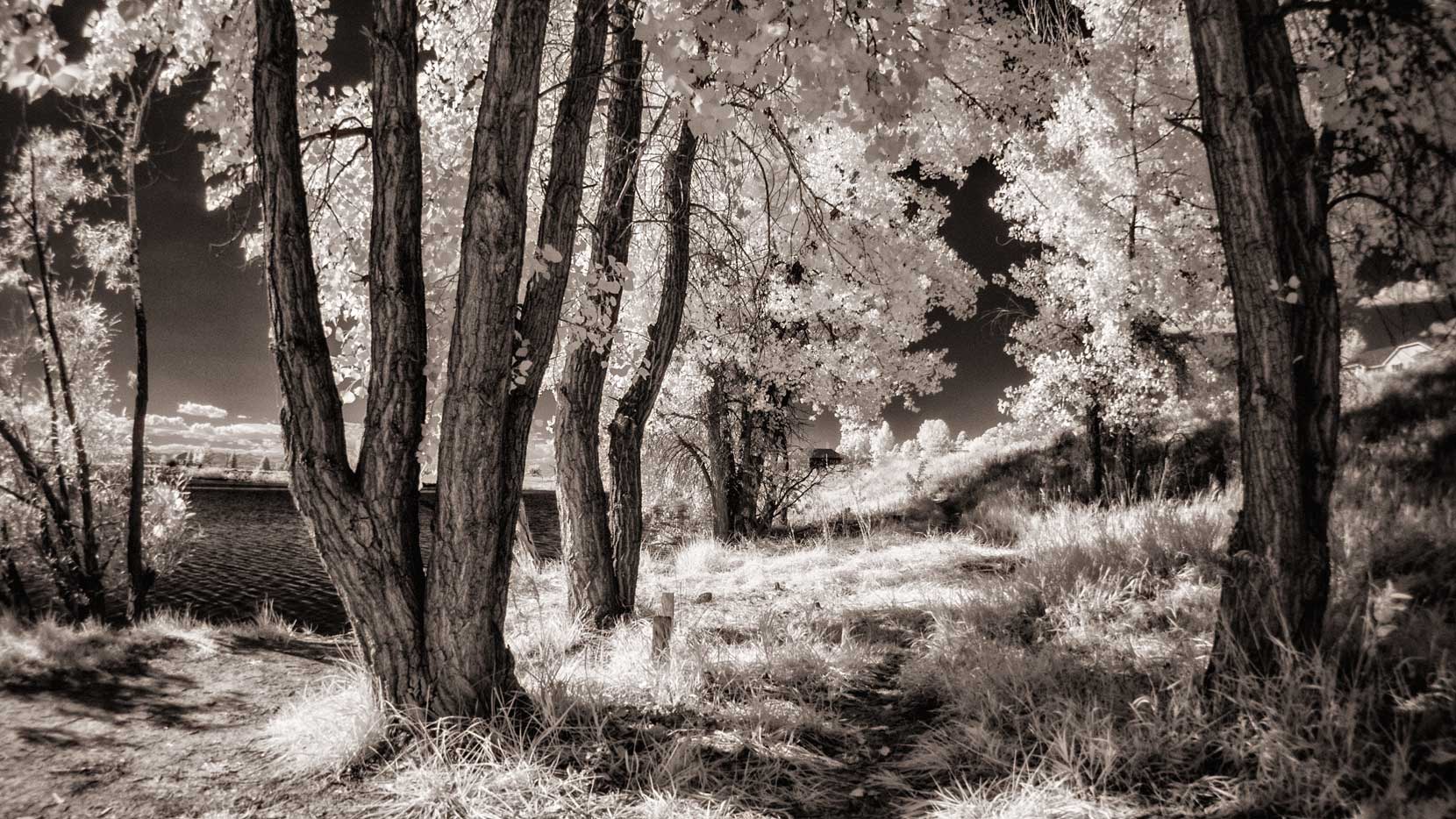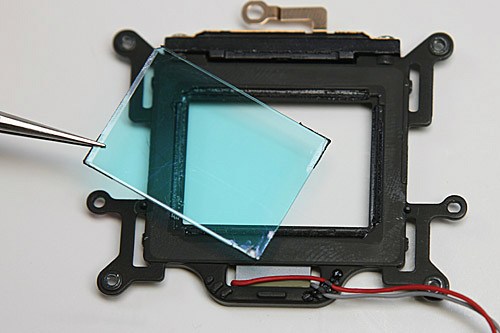Today’s Post by Joe Farace
A digital camera’s sensor typically sees light in wavelengths from 350 to 1,000 nanometers*. Your eyes, on the other hand, only see a narrower range of light from approximately 400 to 700 nanometers. Most digital cameras place a low pass filter in front of their sensor to allow low frequency light that’s visible to the human eye pass through to the sensor where it’s captured but block light from infrared and ultraviolet spectrums (the high end and the low end wavelengths) from polluting a photograph’s color. As early Leica M8 owners quickly discovered, this piece of glass is important for maintaining maximum color fidelity.
 How I made this photo: Bingham Lake is a quiet oasis that’s enjoyed by hikers, mountain bikers, dog walkers and photographer like me. The above image was made using a Panasonic Lumix G5 that was converted to IR capture by LifePixel, using their Standard IR (720nm) filter that’s equivalent to Hoya R72 Filter or Kodak Wratten 89b filter. Lens was a Leica M-Mount Voigtlander Super Wide-Heliar 15mm f/4.5 Aspherical III that I borrowed from a friend. It was mounted to the camera using a Fotodiox M to Micro Four-thirds adapter. The Av exposure was 1/640 sec at f/16 and ISO 400. The RAW image file was process using Silver Efex Pro.
How I made this photo: Bingham Lake is a quiet oasis that’s enjoyed by hikers, mountain bikers, dog walkers and photographer like me. The above image was made using a Panasonic Lumix G5 that was converted to IR capture by LifePixel, using their Standard IR (720nm) filter that’s equivalent to Hoya R72 Filter or Kodak Wratten 89b filter. Lens was a Leica M-Mount Voigtlander Super Wide-Heliar 15mm f/4.5 Aspherical III that I borrowed from a friend. It was mounted to the camera using a Fotodiox M to Micro Four-thirds adapter. The Av exposure was 1/640 sec at f/16 and ISO 400. The RAW image file was process using Silver Efex Pro.
How different companies accomplish their IR conversions varies but it usually goes something like this:
 After removing the camera’s external housing, they remove the internal Low-Pass Filter that prevents infrared and ultraviolet light from striking the sensor. The filter is then replaced with a high quality glass and/or quartz filter that meets the specific nanometer filtration you requested. Here’s a link to the options offered by LifePixel but many other companies offer similar and sometimes different choices.
After removing the camera’s external housing, they remove the internal Low-Pass Filter that prevents infrared and ultraviolet light from striking the sensor. The filter is then replaced with a high quality glass and/or quartz filter that meets the specific nanometer filtration you requested. Here’s a link to the options offered by LifePixel but many other companies offer similar and sometimes different choices.
Your infrared conversion company may ask you send a lens with the body so they can adjust focus to make sure the camera focuses just as well as it did before infrared conversion. I must confess that I’ve never done this with the six conversions I’ve had from three different companies and have been happy with the camera’s focusing ability. But that’s my choice. If you are a perfectionist you might want to go for it.
 You can learn more about infrared photography and my approach to it on my YouTube Channel, where I have to videos:The first is on Using Infrared Filters and the second is on IR Camera Conversions.
You can learn more about infrared photography and my approach to it on my YouTube Channel, where I have to videos:The first is on Using Infrared Filters and the second is on IR Camera Conversions.
My book, The Complete Guide to Digital Infrared Photography is available from Amazon for $17.79 with used copies starting around $13.79 as I write this. Creative Digital Monochrome Effects has a chapter on IR photography and is available from Amazon for $9.39 with used copies starting around two bucks, as I write this.